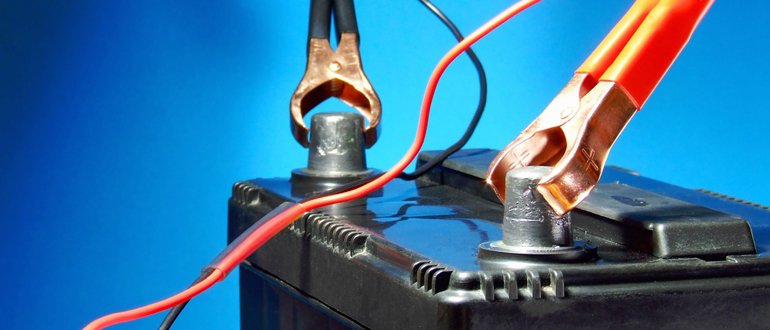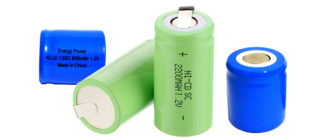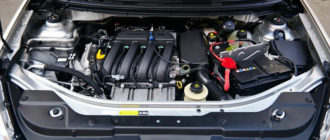Determining the charge time of the battery is an indispensable factor for the correct charging of the battery. If the procedure is terminated prematurely, the battery will not recharge, which may adversely affect its operation. When recharging, electrolyte boiling off processes and plate destruction are possible.
Content
What determines the battery charging time
The battery charge time determines a large number of factors:
The strength of the charge current. It is measured in Amperes. According to generally accepted rules, the battery should be charged with a current corresponding to the battery capacity divided by 10. Thus, if the capacity is 60 ampere-hours, then the charge current will be 6 Amperes, the charge time - 10 hours. If strictly guided by this rule, ideally, the charge time should always be 10 hours.
In practice, this statement is not always true. There is a concept of the efficiency of the charge process. For different types and models of batteries it ranges from 80% to 95%, but no more. Thus, the real charge time should be increased by 10 - 20%
| Battery capacity | Current 10% of capacity | Current 5% of capacity | ||
| Amperage | Charge time | Amperage | Charge time | |
| 40 A / h | 4 | 10 | 2 | 20 |
| 50 Ah | 5 | 10 | 2.5 | 20 |
| 60 A / h | 6 | 10 | 3 | 20 |
| 80 A / h | 8 | 10 | 4 | 20 |
| 90 A / h | 9 | 10 | 4.5 | 20 |
| 100 Ah | 10 | 10 | 5 | 20 |
| 160 A / h | 16 | 10 | 8 | 20 |
| 220 A / h | 22 | 10 | 11 | 20 |
Estimated battery charging time depending on the set current relative to the battery capacity without taking into account the loss of efficiency.
Residual capacity at the time the charge starts. The battery does not always charge from a full charge state. Even when he is unable to roll the starter, his residual capacity is about 5% of the nominal value. That is, a battery with a capacity of, for example, 100 ampere-hours is discharged to a capacity of about 5 ampere-hours, and it should be charged for 9.5 hours, not 10, at a charge current of 10 amperes.
Battery wear. With significant battery wear (more than 5 years of operation), sulfation and plate destruction processes come into effect, and the properties of the electrolyte change. This reduces the residual capacity of the battery.
This process can be approximately estimated by the following rule: minus 10% of capacity for each year of operation. A three-year battery has a capacity of about 70% of the nominal value indicated on the nameplate. From this value should be taken into account when determining the charge time.
Battery Type Now in cars various types of batteries are used, including AGM and gel (GEL). They have original charge modes. The standard three-stage charge of such batteries is divided into initial, main stages and additional charge.
At each stage, the current required according to the technological mode is set. Typically, such batteries initially charge up to 80% of capacity at a current of approximately 10% of capacity.
The final recharge is performed by low current (about 1% of capacity). It is easy to calculate that the charge time of such batteries will be 8 hours (main charge) plus 20 hours (recharge), only 28 hours, that is, about a day. This is done for sale and storage. During operation, such batteries simply do not recharge.
Ambient temperature. If the battery is charged in a cold room in winter, when the ambient temperature is negative, part of the electric energy will be spent on heating the battery. Process efficiency drops, time increases.
On the contrary, charging the battery at elevated air temperatures, it begins to boil prematurely. It has to be disconnected from the charger not fully charged.
Compliance with technology. To perform the correct battery charge, it is necessary to slightly open the process plugs. This is not always the case. In modern maintenance free batteries this is not possible. This also affects the charge time, since the gas outlet is difficult (the technological opening for the gas outlet is small).
How long does it take to charge the battery
When determining the necessary time for charging the battery, they are usually guided by generally accepted rules. With a current of 10% of capacity, it is about 10 hours. Drivers do not always have such time and opportunities. Let's consider the possible options.
- The battery needs to be charged promptly.. The practice of operating a car shows that to run the engine, even at low temperatures, sometimes 50% of the battery capacity is enough. The maximum current that most stationary chargers are designed for is about 15 amperes. Thus, for a battery with a capacity of 60 ampere-hours, it takes 2 hours to charge it half capacity with a maximum current of 15 amperes. Such an operation should not be carried out often, but in an emergency it is possible.
- Battery Training Mode. It is performed to desulfate the plates. The following operations are carried out in a full cycle: charging with a small current (about 1 Ampere up to 50 hours), fast full discharge with a large current, again a long charge and a fast discharge. For the desulfation process, at least 7 cycles must be completed, this takes a long time.
- Super-fast charge with a charge-starting device. In principle, the battery is able to withstand short-term charging current of up to 50 amperes. The charging process is usually controlled manually (battery heating is estimated). Such an operation is extremely dangerous, it is performed only in an emergency, but it can restore the battery to life in about fifteen minutes.
Signs of a charged battery
At the end of the process, it is necessary to determine the moment of disconnection from the charger. When measuring voltage with a multimeter, it is advisable to disconnect the battery from the charger, in extreme cases, simply temporarily turn off the charger.
The voltage at the terminals should be about 12.8 volts. Not always such measurements will indicate the end of the process. In professional measurements, a special load fork is used.
It is believed that a fully charged battery should show approximately 12.6-12.8 volts.
Most often, the completion of the charging process is indicated by the boiling of the electrolyte. It cannot always be seen, since in the case of maintenance-free models, visual access is not possible. You can determine the process of boiling by ear.
The easiest way to determine the end of the process is when the automatic charger is turned off. True, such a device may fail in case of loss of battery capacity.
Have questions or have something to add to the article? Then write to us about it in the comments. This will help make the article more complete and useful!









